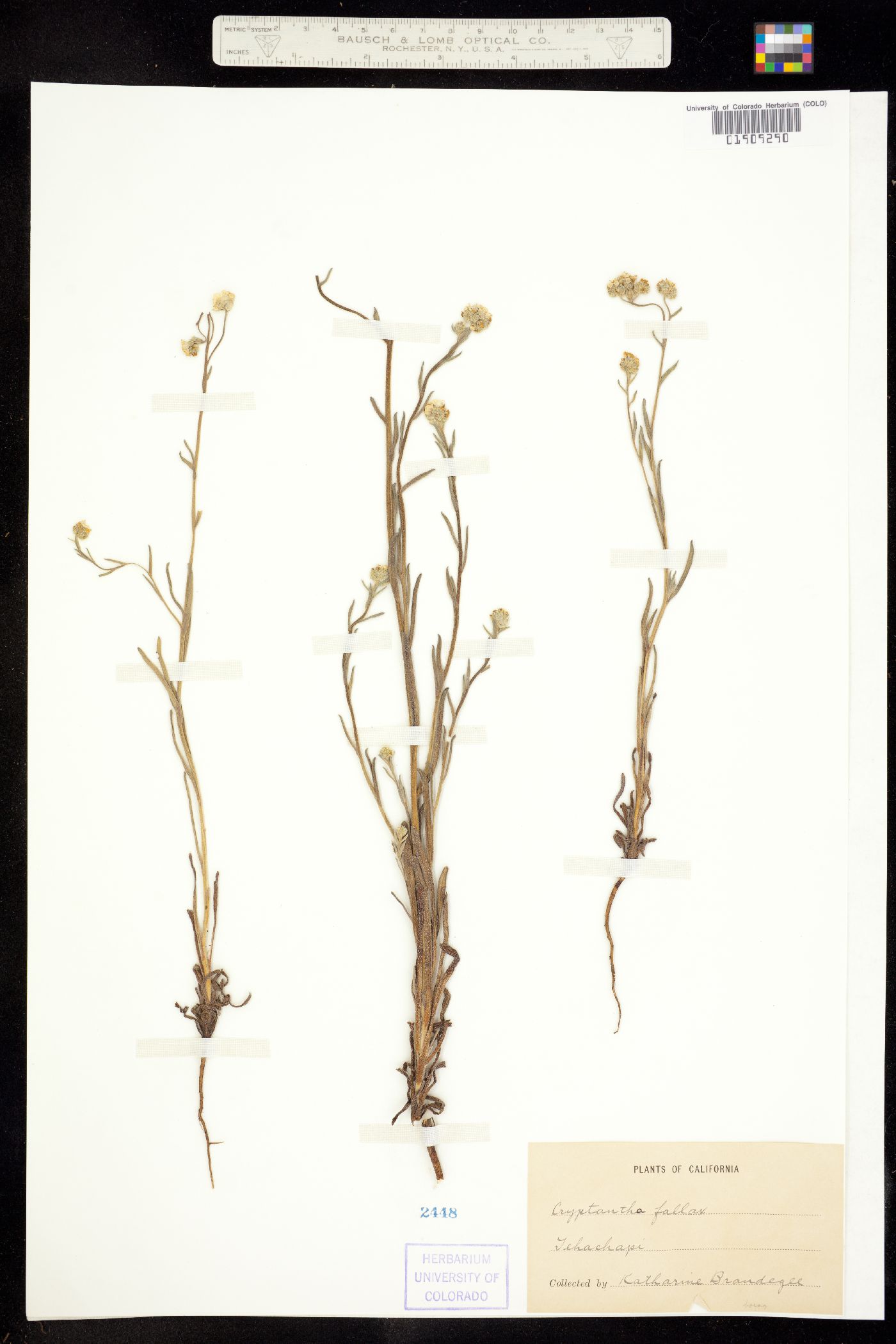Cryptantha linearis
|
|
|
|
Family: Boraginaceae
[Cryptantha fallax (Phil.) Reiche, moreEritrichium minutiflorum Phil.] |
Jepson 2012, Kearney and Peebles 1969 Duration: Unknown Nativity: Native Lifeform: Forb/Herb General: Herbaceous, slender annuals, 10-35 cm tall, stems simple or branching throughout, branches decumbent to erect, herbage strigose and rough-hairy to short-bristly with spreading hairs. Leaves: Sessile, basal and cauline; basal whorled and generally opposite, cauline generally alternate and reduced, blades linear to narrow-oblanceolate, 1-3.5 cm long, surfaces dense-bristly. Flowers: White, corolla tube with 5 spreading to appressed lobes, centers (appendages) yellow, corolla tube 1-13 mm long, limb 1-2.5 mm in diameter, deciduous, lobes lanceolate to narrow-ovate, surfaces uniformly tufted and soft-hairy with ascending hairs, sepals fused at base, calyx 1.5-2 mm long, 2-3 mm long in fruit, with a broadly conic base and surfaces without conspicuous bristles but hispid-villous with densely appressed hairs, anthers included, ovary 4-lobed, inflorescences dense, bractless, coiled in bud but generally elongated in fruit, unscented, borne terminally in raceme-like or spike-like cymes in groups of 1-3, pedicels absent. Fruits: Nutlets, 1-3, lanceolate to narrow-ovate, 1-2 mm long, surfaces smooth and shiny, margins rounded to generally sharp-angled and bases wide-truncate, flat with concave spine concave basally below; biconvex with attachment scar above, edges abutted to gappe Ecology: Found in sandy to rocky soils, also frequently on limestone soils, on dry slopes and mesas, in creosote-bush scrub, in Joshua-tree and pi-on-juniper woodland communities, from 1,500-8,000 ft (457-2438 m); flowering March-June. Distribution: Arizona, California, Colorado, Idaho, New Mexico, Nevada, Oregon, Utah, Wyoming. Notes: Good indicators for this species are the calyx with a broadly conic base, its surfaces without conspicuous bristles but with densely appressed hispid-villous hairs, and the 1-3 nutlets surpassing the style in length. Ethnobotany: Specific uses for this species are unknown, but other species in the genus have uses; an infusion of plant taken to stay slender and used for coyote infection. Synonyms: Cryptantha gracilis Editor: LCrumbacher2012 Etymology: Cryptantha comes from the Greek krypto, "hidden," and anthos, "flower," a reference to the first described species in the genus which has inconspicuous flowers that self-fertilize without opening; linearis means linear, parallel-sided. |


